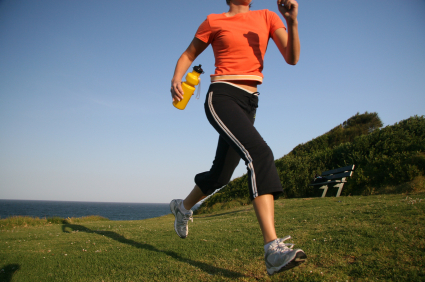
Most people who run on a regular basis can tell you the exact moment when they reach the ideal balance of comfort and speed. This is the point at which your legs feel loose, your heart is pumping, and you feel as if you could keep this running pace up forever.
When you achieve this feeling, you will know that you have reached your optimal running pace!
For many, many years, experts believed that humans have a metabolic energy rate that remains constant. They assumed that the same amount of energy would be necessary to run a mile, whether you ran it in five minutes or if you run it in ten. Even though the rate at which you burn energy is higher when you reach a certain running pace, you would get to the same point in half the time.
However, as it turns out, every person has his or her own personal optimal running pace. The optimal running pace is the pace that uses the least possible amount of oxygen to run over the desired distance.
What does Running Pace mean?
Your running pace is determined by how long it takes you to run one mile. For example if you can run one mile in six minutes, then your running pace is 6 minutes per mile.
Your optimal running pace is the pace when you are running where you reach a type of euphoria that gives you the feeling you could run at the same speed for miles.
This is when your running workout is the most effective. This is when your heart is in the right target zone to provide the fitness and weight loss results that you seek.
It is important to determine what your optimal running pace is and work to keep up that pace for as much of your workout as possible. When you are aware of your optimal running pace, you will be able to customize your jogging routine in order to provide you with the greatest benefits for your health as well as for your overall well-being.
How to Find Your Effective Running Pace
Just like with any other cardiovascular exercise, if you are going to run for several minutes or a few hours, you need to find a running pace that you can sustain. Individuals who run on a regular basis often run the same routes as part of their workout.
Make landmarks and time check along the way to see what your speed is like and find an effective running pace that will work the best for you. Your markers can be street intersections, houses, flagpoles, fence posts or any other objects along your path that you can use as checkpoints to find your optimal running pace for the most effective workout.
For example, if you are running a three-mile course, divide your run up into half-mile or single-mile runs and practice a workout technique known as repeats. Basically put, run five or six half-mile runs at your target three-mile running pace, or make three or four single-mile runs at your target three-mile running pace.
Practicing this type of workout will challenge you, so you may need to rest in between runs to catch your breath. You will find it easier to keep up a faster running pace for longer the more you practice your technique.
Be the first to comment